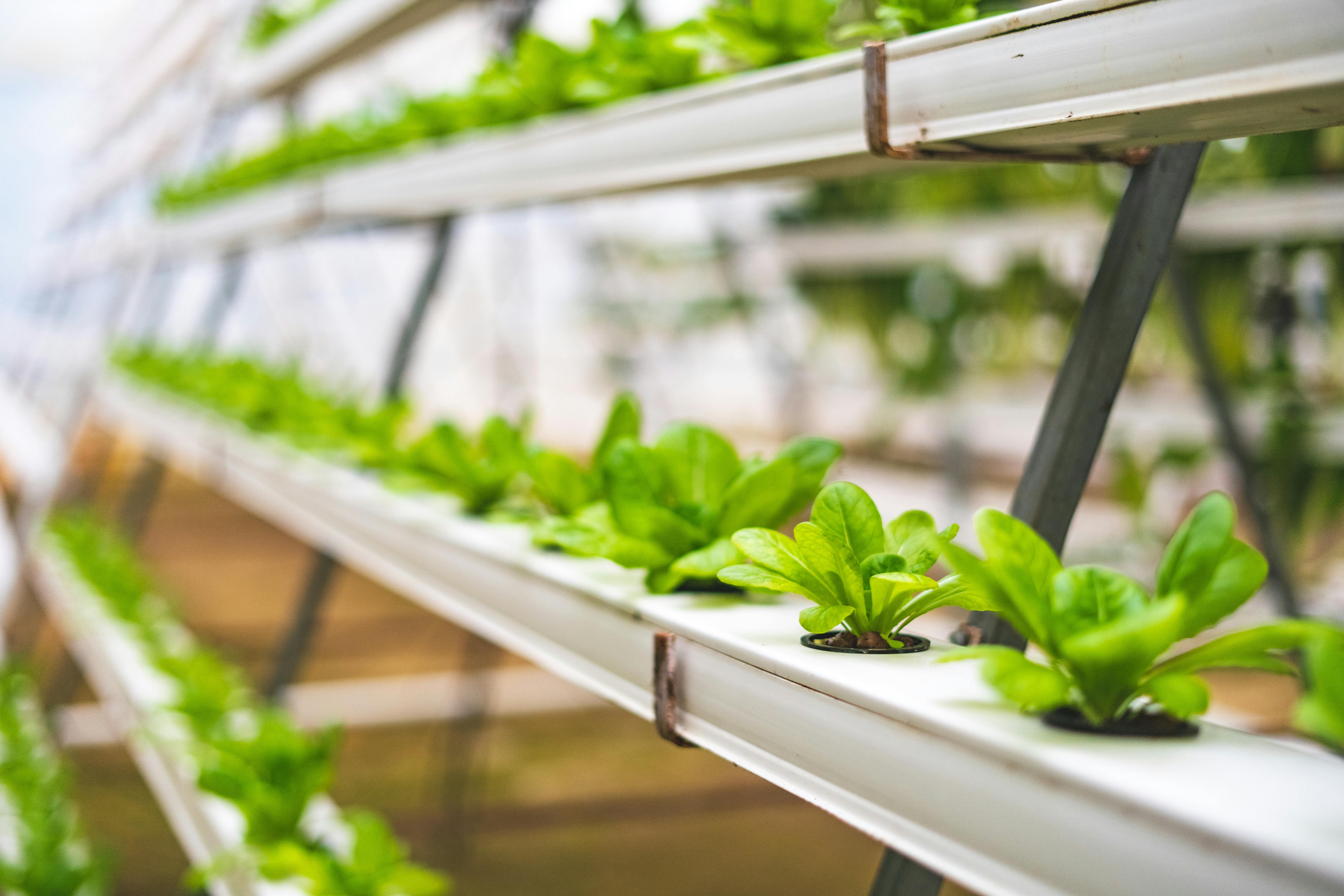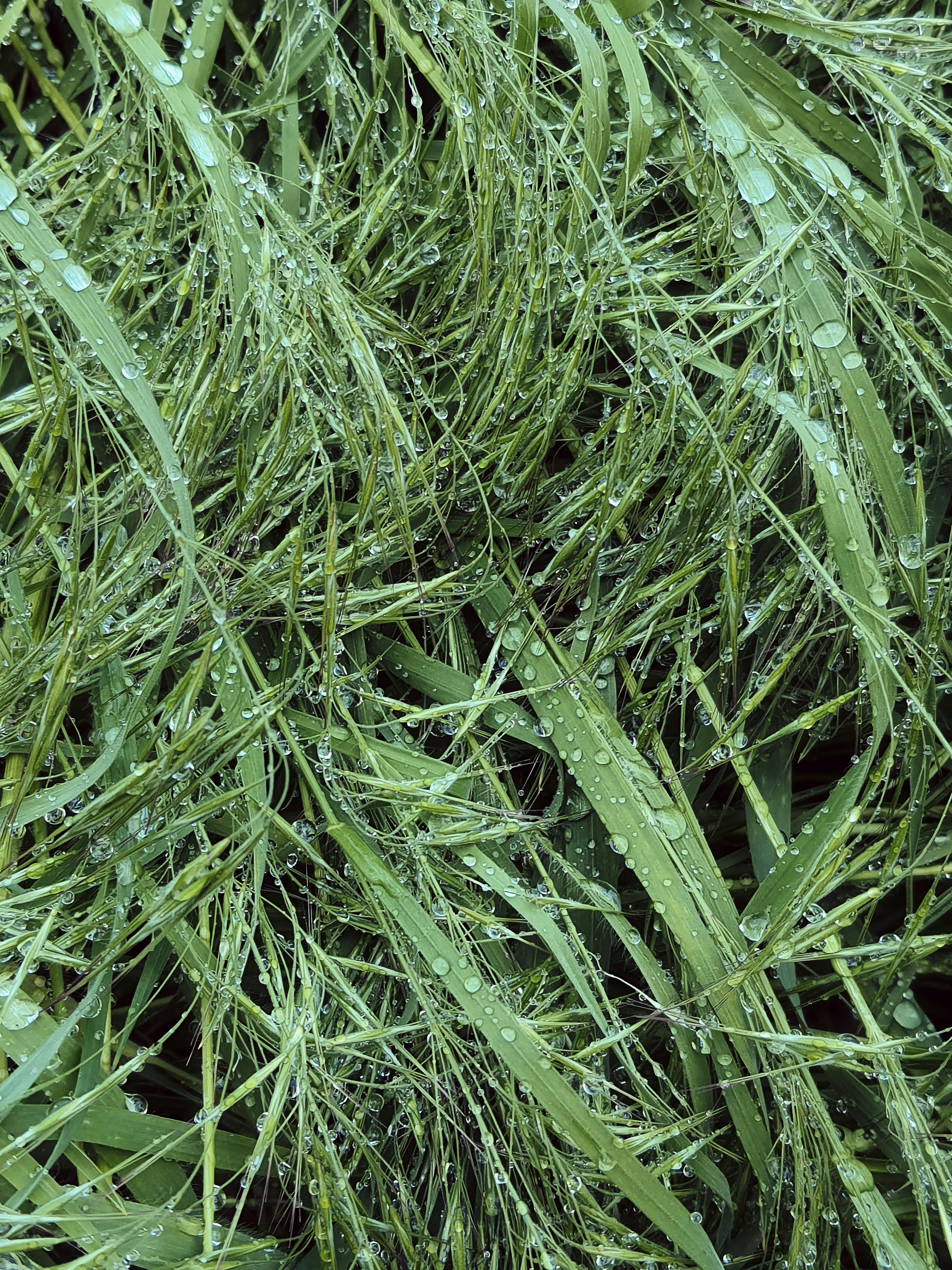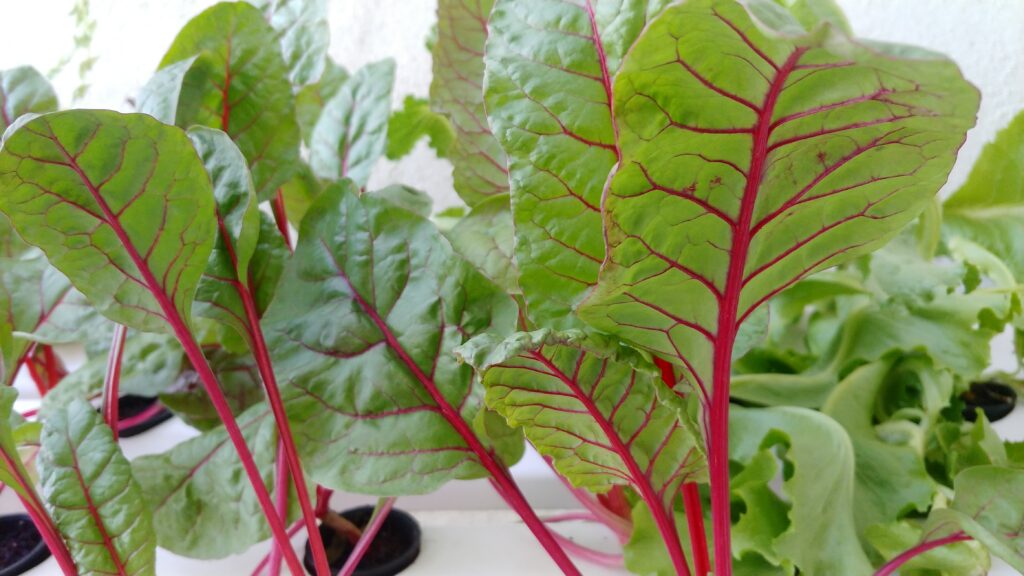Are you curious about how to start a hydroponic garden, but feel overwhelmed by the process? Don’t worry, because with a little guidance, you can easily begin your journey as a beginner hydroponic gardener. From choosing the right system and setting up your garden to selecting the appropriate plants and maintaining them, this article will provide you with all the essential tips and tricks to help you get started on your hydroponic gardening adventure. So, put on your gardening gloves and let’s embark on this exciting new green-thumb endeavor together!

Choosing the Right Hydroponic System
Understanding the Types of Hydroponic Systems
When starting a hydroponic garden, one of the first steps is to choose the right hydroponic system for your needs. There are several different types of hydroponic systems to consider, each with its own advantages and disadvantages.
Some of the most common types of hydroponic systems include:
- Deep Water Culture (DWC): In this system, plants are suspended in nutrient-rich water with their roots submerged. It is a simple and inexpensive system, making it a popular choice for beginners.
- Nutrient Film Technique (NFT): This system involves a thin film of nutrient solution flowing over the roots, providing a continuous supply of nutrients. NFT systems are known for their efficient use of water and nutrients.
- Drip System: A drip system delivers nutrient solution to the roots of plants through a series of tubes with emitters. It offers flexibility and can be easily scaled up or down according to your needs.
- Ebb and Flow: Also known as flood and drain, this system periodically floods the root zone with nutrient solution and then drains it away. It allows for ample oxygenation of the roots and is suitable for a variety of plants.
By understanding the different types of hydroponic systems, you can make an informed decision about which one will work best for your specific requirements.
Considerations for Choosing a Hydroponic System
When selecting a hydroponic system, there are a few key considerations to keep in mind. These include:
-
Space availability: Consider the size of the area where you plan to set up your hydroponic garden. Some systems, like NFT or DWC, require less space compared to systems that involve multiple containers or trays.
-
Budget: Determine your budget for setting up the hydroponic system. Some systems may require a higher initial investment, while others can be more affordable.
-
Level of expertise: Consider your level of experience and knowledge in hydroponics. Some systems, like DWC or drip systems, are relatively straightforward, making them suitable for beginners. Others, like aeroponics or misting systems, may require more advanced knowledge and skills.
-
Plant compatibility: Different hydroponic systems may be better suited for specific types of plants. Consider the types of plants you wish to grow and choose a system that can adequately support their needs.
By taking these considerations into account, you can select a hydroponic system that aligns with your resources, expertise, and gardening goals.
Selecting the Suitable Plants for Hydroponics
Best Plants for Hydroponic Gardening
One of the great advantages of hydroponic gardening is the ability to grow a wide range of plants, including fruits, vegetables, herbs, and flowers. However, not all plants thrive equally well in hydroponic systems. Here are some popular plants that are well-suited for hydroponics:
-
Leafy greens: Lettuce, spinach, kale, and other leafy greens are ideal for hydroponics because they have shallow root systems and grow relatively quickly.
-
Herbs: Basil, mint, parsley, and cilantro are excellent choices for hydroponic gardens. They require little space and can be harvested frequently.
-
Tomatoes: Tomatoes are a favorite among hydroponic gardeners due to their high yield and potential for year-round production.
-
Cucumbers: These vining plants can be trellised in hydroponic systems, allowing them to grow vertically and save space.
-
Strawberries: Hydroponic strawberries yield sweet and juicy fruits. They can be grown in vertical systems or hanging baskets.
Factors to Consider when Choosing Plants
When selecting plants for your hydroponic garden, it is important to consider the following factors:
-
Space requirements: Different plants have varying growth habits, so consider the space available in your hydroponic system and choose plants that fit within it.
-
Nutrient requirements: Plants have different nutrient preferences. Some may require higher levels of specific nutrients, such as tomatoes needing ample potassium. Ensure that the nutrient solution you provide matches the needs of your chosen plants.
-
Growth rate: Certain plants have shorter growth cycles and may be more suitable for hydroponic gardening. Consider the time it takes for your chosen plants to reach maturity and whether it aligns with your goals.
-
Disease resistance: Some plant varieties have better disease resistance, which can help prevent the spread of pests and diseases in your hydroponic system. Research and choose varieties with good disease resistance to ensure a healthier garden.
By considering these factors, you can select plants that are well-adapted to hydroponic gardening and increase your chances of success.
Preparing the Hydroponic Setup
Setting Up the Growing Area
Before setting up your hydroponic garden, it is essential to prepare a suitable growing area. Here’s how:
-
Choose an indoor or outdoor location: Hydroponic systems can be set up both indoors and outdoors. Consider factors such as sunlight availability, temperature control, and convenience when deciding where to place your garden.
-
Ensure proper ventilation: Proper airflow helps prevent the buildup of humidity and reduces the risk of plant diseases. Good ventilation also aids in temperature regulation.
-
Clean and sanitize: Thoroughly clean and sanitize the area to minimize the presence of pests, pathogens, and contaminants.
Gathering Required Equipment and Supplies
To set up a hydroponic garden, you will need several essential equipment and supplies. These include:
-
Grow trays or containers: Choose appropriately sized containers or trays that can accommodate the plants you intend to grow. Ensure they have sufficient drainage.
-
Growing medium: Select a hydroponic growing medium such as perlite, coconut coir, rockwool, or vermiculite. This provides support for the plants’ roots and helps hold the nutrient solution.
-
Nutrient solution: Purchase a high-quality hydroponic nutrient solution formulated for the specific plants you plan to grow. Ensure it contains the essential macronutrients and micronutrients.
-
pH testing kit: Hydroponic systems require careful monitoring of pH levels. Invest in a reliable pH testing kit to ensure proper nutrient absorption by the plants.
-
Lighting: Depending on your growing area and the availability of natural light, you may need additional artificial lighting. LED grow lights are commonly used in hydroponics due to their energy efficiency and spectrum control.
-
Water pump and timer: Depending on your chosen system, you may need a water pump and timer to control the periodic flooding or flow of the nutrient solution.
By gathering the necessary equipment and supplies ahead of time, you can ensure a smooth and efficient setup process.
Ensuring Proper Lighting and Temperature
Proper lighting and temperature control are crucial for the success of your hydroponic garden. Here’s what you need to know:
-
Lighting requirements: Most plants require 12 to 16 hours of light per day for optimal growth. Position your grow lights at an appropriate distance from the plants to ensure they receive sufficient light without burning them. Adjust the light intensity and spectrum as needed for different growth stages.
-
Temperature control: Different plants have varying temperature requirements. Generally, the ideal temperature range for most plants in a hydroponic system is between 65-75°F (18-24°C) during the day and slightly cooler at night. Use fans, ventilation, and air conditioning systems, if necessary, to maintain the desired temperature range.
Determining the Water and Nutrient Sources
In hydroponic gardening, the water and nutrient sources play a crucial role in the health and growth of your plants. Consider the following:
-
Water quality: Use clean, filtered water to avoid contaminating the nutrient solution and clogging the system. If your tap water contains high levels of chlorine or other contaminants, consider using a water purifier or add a dechlorinator to ensure water quality.
-
Nutrient solution preparation: Follow the instructions provided by the manufacturer of your chosen nutrient solution to prepare the correct dilution. Measure the solution carefully to maintain the ideal nutrient balance for your plants.
-
Nutrient solution replenishment: Monitor the nutrient solution levels regularly and ensure it is replenished as needed. Depending on the size of your system and the water evaporation rate, you may need to top up the solution periodically.
By paying attention to the water and nutrient sources, you will provide your plants with the essential elements they need to thrive in a hydroponic environment.
Understanding Hydroponic Growing Mediums
Types of Hydroponic Growing Mediums
Hydroponic growing mediums serve as a support structure for the plants’ roots while allowing proper absorption of water and nutrients. Here are some common types of hydroponic growing mediums:
-
Perlite: Perlite is a lightweight volcanic rock that provides excellent drainage and aeration. It is often mixed with other growing mediums to improve their structural integrity.
-
Coconut Coir: Made from coconut husks, coconut coir is an environmentally-friendly and renewable growing medium. It retains moisture well and provides good aeration.
-
Rockwool: Rockwool is made by heating and spinning volcanic rock or limestone. It has excellent water retention and root insulation properties. Rockwool cubes or slabs are commonly used for seed germination.
-
Vermiculite: Vermiculite is a natural mineral with high water retention capacity. It promotes aeration and helps maintain a consistent moisture level.
-
Expanded Clay Pebbles: Also known as hydroton or LECA (lightweight expanded clay aggregate), clay pebbles provide good drainage and aeration. They are popular in systems like DWC and NFT.
Selecting the Appropriate Medium for Each Plant
When selecting a hydroponic growing medium, consider the specific requirements of the plants you are growing. For example:
-
Leafy greens and herbs often perform well in lightweight mediums like perlite or coconut coir, which provide ample oxygenation to the roots.
-
Seedlings may benefit from a finer medium like rockwool cubes, as it promotes healthy root development and moisture retention.
-
Vining plants such as tomatoes or cucumbers may require a medium with good support, like coco coir mixed with perlite or clay pebbles.
-
Larger plants may thrive in mediums like expanded clay pebbles for optimal root anchoring and nutrient availability.
By choosing the appropriate growing medium for each plant, you can enhance their growth and overall health in your hydroponic system.

Providing the Right Nutrients for Plants
Understanding Essential Nutrients for Hydroponics
In hydroponic gardening, providing the right nutrients to your plants is crucial for their growth and productivity. The essential macronutrients required by plants are:
-
Nitrogen (N): Nitrogen is necessary for vegetative growth, leaf development, and overall plant vigor.
-
Phosphorus (P): Phosphorus promotes root development, flowering, and fruiting in plants.
-
Potassium (K): Potassium contributes to overall plant health, disease resistance, and fruit quality.
Additionally, plants require essential micronutrients in smaller amounts. These include iron (Fe), manganese (Mn), zinc (Zn), copper (Cu), boron (B), molybdenum (Mo), and chlorine (Cl).
Ensuring Proper pH Levels
Maintaining the proper pH level of the nutrient solution is crucial for nutrient absorption by the plants. Most hydroponic crops thrive in a pH range of 5.5 to 6.5. Regularly monitor the pH levels using a testing kit and adjust as necessary using pH up or down solutions.
Choosing and Applying Hydroponic Nutrient Solutions
Selecting the right hydroponic nutrient solution is vital for the health and productivity of your plants. Look for a nutrient solution specifically formulated for hydroponics and the plant varieties you are cultivating. Follow the manufacturer’s instructions for proper dilution and application rates.
Regularly check the nutrient solution’s strength and adjust accordingly based on the growth stage of your plants. Remember to observe any changes in plant appearance or growth, as they may indicate nutrient deficiencies or imbalances.
By providing the right nutrients and maintaining appropriate pH levels, you will ensure the optimal growth and development of your hydroponic plants.
Starting Seeds or Transplanting Seedlings
Germinating Seeds for Hydroponics
To start seeds for hydroponic gardening, follow these steps:
-
Choose high-quality seeds from reputable sources that are suitable for hydroponics.
-
Pre-soak the seeds in clean water for a few hours or as directed by the seed supplier. This helps initiate germination.
-
Transfer the pre-soaked seeds to a suitable germination medium such as rockwool cubes or coconut coir.
-
Keep the germination medium consistently moist, maintaining a warm and dark environment to encourage seedling emergence.
-
Once the seedlings have emerged and have developed their first set of true leaves, they are ready to be transplanted into your hydroponic system.
Transplanting Established Seedlings to Hydroponic System
When transplanting seedlings into your hydroponic system, follow these steps:
-
Carefully remove the seedlings from their germination medium, being cautious not to damage their delicate roots.
-
Gently rinse the roots under clean, lukewarm water to remove any media residues.
-
Place the seedlings in the appropriate growing medium within your hydroponic system. Ensure the roots are fully submerged or in contact with the medium.
-
Provide a supportive structure, such as a mesh net pot or hoop, to keep the seedling in place until the roots establish and secure themselves.
-
Adjust the nutrient solution levels as needed and monitor the seedlings closely for the first few days to ensure they adapt well to the hydroponic environment.
By properly germinating and transplanting seedlings, you can kickstart your hydroponic garden with healthy and robust plants.

Maintaining the Hydroponic Garden
Monitoring and Adjusting pH and Nutrient Levels
Regularly monitor the pH and nutrient levels in your hydroponic system to ensure optimal plant health. Use a pH testing kit to check the pH levels of the nutrient solution, and adjust as needed using pH up or down solutions.
Observe the plants for any signs of nutrient deficiencies or imbalances, such as yellowing leaves or stunted growth. Adjust the nutrient solution’s strength or composition based on the specific plant requirements and growth stage.
Managing Water and Oxygen Levels
Maintaining proper water and oxygen levels in your hydroponic system is vital for the well-being of your plants. Here’s what you need to know:
-
Water level: Ensure the roots are always submerged or in contact with the nutrient solution. Regularly check the water level and top up as needed to prevent the roots from drying out.
-
Oxygenation: Adequate oxygenation of the root zone is crucial for preventing root diseases and promoting healthy growth. Improve oxygenation by using air stones, air pumps, or incorporating oxygen-rich additives in the nutrient solution.
Controlling Pests and Diseases
Although hydroponic systems are generally less prone to pests and diseases than traditional soil-based gardens, it’s still important to stay vigilant. Here are some pest and disease control measures to consider:
-
Regular inspection: Regularly inspect your plants for any signs of pests or diseases. Look for tiny insects, spots on leaves, or unusual growth patterns.
-
Implement preventive measures: Maintain good hygiene by regularly cleaning and sanitizing your hydroponic system. Avoid introducing pests from contaminated tools or infected plants. Monitor and remove any dead or decaying plant matter promptly.
-
Biological controls: Consider using biological control methods, such as beneficial insects or nematodes, to control pests. These natural predators can help keep pest populations in check.
-
Integrated Pest Management (IPM): Implement an Integrated Pest Management approach that combines different pest control strategies such as physical barriers, organic sprays, and cultural practices to minimize pest damage.
By monitoring, managing water and oxygen levels, and implementing pest and disease control measures, you can maintain a healthy and thriving hydroponic garden.
Optimizing Light and Temperature Conditions
Importance of Proper Lighting in Hydroponics
Proper lighting is vital for the growth and development of plants in your hydroponic garden. Here’s why it matters:
-
Photosynthesis: Light is the primary energy source for photosynthesis, the process by which plants convert light into energy for growth.
-
Spectrum control: Different types of light, such as blue and red wavelengths, have specific effects on plant growth. Adjusting the spectrum using LED grow lights can promote specific growth stages, including vegetative growth and flowering.
-
Light intensity: Plants require a sufficient light intensity to carry out photosynthesis effectively. Ensure your plants are receiving the right amount of light for their growth stage.
Controlling Grow Room Temperature
Maintaining the optimal temperature in your hydroponic garden is crucial for plant health and productivity. Consider the following guidelines:
-
Ambient temperature: Most plants thrive in temperatures between 65-75°F (18-24°C) during the day. Avoid excessive temperature fluctuations to prevent heat stress or temperature shock.
-
Air circulation and ventilation: Good air circulation helps regulate temperature and prevent humidity buildup. Use fans or ventilation systems to maintain a consistent airflow.
-
Heat sources: Be mindful of sources of heat in your growing area, such as lighting fixtures or nearby appliances. Use cooling devices like air conditioners or fans to keep the temperature at an optimal level.
Avoiding Heat Stress and Light Burn
Heat stress and light burn can negatively impact plant growth and health. To avoid these issues, consider the following:
-
Adjust lighting distance: Ensure that your grow lights are positioned at an appropriate distance from the plants to prevent heat stress or light burn. Follow the manufacturer’s recommendations for the recommended distance based on the light fixture’s wattage and plant’s light requirements.
-
Temperature monitoring: Regularly monitor the temperature in your grow room or growing area using a thermometer or climate control system. Adjust lighting or ventilation as necessary to prevent excessive heat buildup.
-
Shade cloth or light diffusers: If you notice signs of light burn on your plants, like bleached or scorched leaves, consider using shade cloth or light diffusers to filter or redistribute light intensity.
By optimizing light and temperature conditions, you can create an ideal growth environment for your hydroponic plants and promote healthy growth.
Harvesting and Troubleshooting
Determining the Right Harvest Time
Knowing when to harvest your hydroponic plants is crucial to ensure peak flavor, texture, and nutritional value. Here are a few indicators to help you determine the right time for harvest:
-
Plant appearance: Observe the plants for signs of maturity, such as well-developed fruits or flowers. Color changes, like tomato fruits turning red, can indicate readiness for harvest.
-
Taste and texture: Sample a small portion of the plant to assess flavor, texture, and sweetness. Harvest when the taste meets your preferences.
-
Harvest guidelines: Research specific harvest guidelines for different crops to gain insights into optimal timing. Factors like days to maturity, size, and appearance can also provide guidance.
Always harvest with clean hands or sanitized tools to minimize the risk of introducing contaminants into your hydroponic system.
Common Hydroponic Garden Issues and Solutions
Even with proper care, hydroponic gardens may encounter a few common issues. Here are some troubleshooting tips:
-
Nutrient deficiencies: Monitor your plants for any signs of nutrient deficiencies, such as yellowing leaves or stunted growth. Adjust the nutrient solution composition and strength to address specific deficiencies.
-
Algae growth: Algae growth can occur due to excessive light exposure or nutrient imbalances. Reduce light exposure, ensure proper ventilation, and maintain proper nutrient concentration to discourage algae growth.
-
Clogged or blocked system: Over time, the hydroponic system may experience clogs or blockages. Regularly check the system, especially nutrient delivery tubes or emitters, to ensure unimpeded flow.
-
Pest infestations: Despite preventive measures, pests may still find their way into your hydroponic system. Introduce natural pest control methods, such as beneficial insects or organic sprays, to manage the infestation.
By identifying and addressing these common issues, you can maintain a healthy hydroponic garden and enjoy bountiful harvests.
Expanding Your Hydroponic Garden
Scaling Up the Operation
Once you have gained confidence and experience with your hydroponic garden, you may consider scaling up your operation. Here are some tips for expansion:
-
Determine available space: Assess the space available for additional hydroponic systems. Consider factors like lighting, ventilation, and access to water and power sources.
-
Plan your layout: Create a well-thought-out layout to optimize space utilization. Consider factors like workflow, maintenance accessibility, and ease of monitoring.
-
Gradual expansion: Start by adding a few more systems or containers and increase gradually as you gain experience and confidence.
-
Automation and technology: Explore automation and remote monitoring systems to streamline and enhance the efficiency of your larger hydroponic setup.
Considering Vertical Farming Techniques
Vertical farming techniques are gaining popularity in hydroponics, especially in limited space scenarios. Consider these techniques for vertical expansion:
-
Vertical grow towers: Utilize vertical space by setting up grow towers or racks with multiple growing levels. This allows for efficient use of space while maximizing plant density.
-
Vertically stacked NFT systems: Stack multiple nutrient film technique (NFT) channels vertically to increase growing area without requiring significant horizontal space.
-
Hanging baskets: Hang baskets or containers from overhead structures to utilize vertical space for growing trailing or vining plants like strawberries or tomatoes.
Vertical farming techniques offer opportunities to maximize production in limited space environments and can be an exciting avenue for expanding your hydroponic garden.
By carefully planning and implementing expansion strategies, you can take your hydroponic gardening to new heights while increasing your produce yield.
Starting a hydroponic garden may seem intimidating at first, but with the right knowledge and careful planning, it can be a rewarding and productive endeavor. By understanding the different hydroponic systems, selecting suitable plants, preparing the setup, providing the right nutrients, and maintaining optimal conditions, you can create a thriving hydroponic garden. Remember to monitor your plants regularly, troubleshoot issues, and continue to expand your knowledge and skills in hydroponic gardening. Enjoy the journey and the bountiful harvests that come with this innovative and sustainable approach to growing plants.




